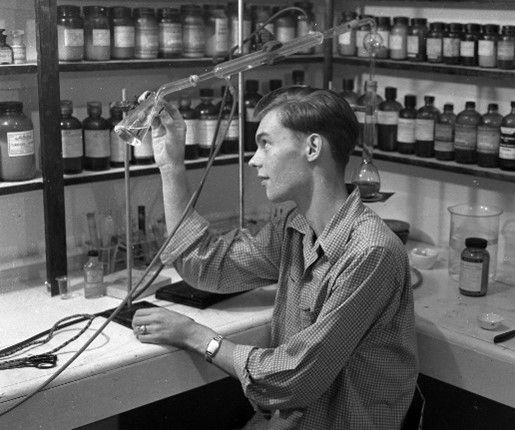
This month we have the honor of profiling John Fronabarger, PacSci EMC’s longest-tenured employee. John’s storied career includes recognition as author on over 50 scientific publications and inventor of at least 25 U.S. Patents. Now in his 90’s, he continues to advance the PacSci EMC mission as a part-time employee, inspiring us daily with his unwavering commitment to the field of energetics.
John was born in 1927 in Fredericktown, Missouri to John was born in 1927 in Fredericktown, Missouri to Missouri Photojournalism Hall of Fame photographer Garland Fronabarger and schoolteacher May Fronabarger. In contrast to his parents’ careers, John found his calling in science at an early age. When he was 10, he built a laboratory in the basement of his house to satisfy his curiosity for chemistry, marking the beginning of a lifelong pursuit in the field.
In 1950, John graduated from Southeast Missouri State College in Cape Girardeau with majors in chemistry and mathematics. He then attended graduate school at the University of Missouri, Columbia, majoring in organic chemistry under renowned organic chemist Prof. Norman Rabjohn. Before long, his work was appearing in industry-leading journals. His first article, “β-diethylaminoethyl esters of sterically hindered alkyl substituted benzoic acids,” was published in the Journal of Organic Chemistry in 1955.
John’s expertise in chemistry made him valuable to the energetic Rmaterials industry. In 1959, he joined the armament division of Universal Match Corp (which later became Unidynamics), where he developed BI- 770, a high temperature bridge ignition replacement for lead styphnate. He was also involved in hotwire initiation studies, electrothermal response testing and field expedient ordinances for the U.S. Army. To top it all off, John helped destroy classified items to prevent compromise by foreign adversaries – a scene straight out of a James Bond movie!
Starting in 1962, he worked on a number of contracts with Sandia National Labs, preparing over 200 energetic coordination compounds involving at least nine coordinating metals. He was also instrumental in development of the cobalt (III)-based CP series explosives, which have been used in oilfield completion activities, military and commercial aircraft, and nuclear weapons.
John was an employee at Unidynamics when his company was acquired by PacSci EMC in 1993. At PacSci EMC, his notable contributions include synthesizing energetic aromatic and heterocyclic compounds (withemphasis on high nitrogen compounds) and developing pyrotechnics and propellants. In 1996, NSWC-IH asked him to perform a literature study of potential “green” replacements for lead azide and styphnate. His research led to the development of programs for the primary explosives DBX-1, MTX-1 and KDNP, including detonator, actuator, and gun primer studies.
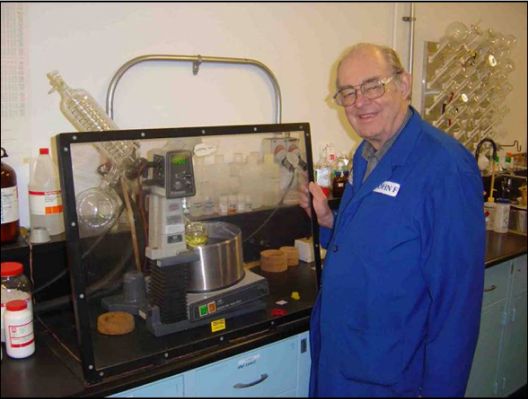
John’s PacSci EMC resume also includes considerable experience in chemistry and ordnance engineering troubleshooting. This includes failure analysis involving chemical, electrical, and mechanical phenomena, as well as developing conceptual design for ordnance components. Recently, his focus has been on synthesizing ultra-high temperature high nitrogen secondary explosives.
As you can see, John’s legacy here is well-cemented.
Outside of his day job, his accomplishments are lengthy and illustrious. In 2001, he received a NSWC-IH Commendation award for his work on CP use in Tomahawk missiles. In 2006, he was named to the R&D 100 list for his work in “green” energetics. In 2010, the U.S. Navy’s CAD/PAD division recognized him with a Lifetime Achievement Award. John has also served as Treasurer on the Board of Directors of the International Pyrotechnics Society, and as a member of the Steering Committee, International Symposium on Energetic Materials Technology, American Defense Preparedness Association, and American Chemical Society. Most importantly, John is a loving husband to Virginia, his wife of over 50 years!
John has logged over 61 years of experience in the field of energetic materials chemistry, and he shows no signs of slowing down.
We’re thankful for everything John has done at PacSci EMC and look forward to his many contributions in the years to come!
Stories from the Field
In addition to his professional accomplishments, John is cherished by his friends and colleagues as both an exceptional mentor and someone who knows how to have a good time. Read on for some of his acquaintances’ fondest memories.
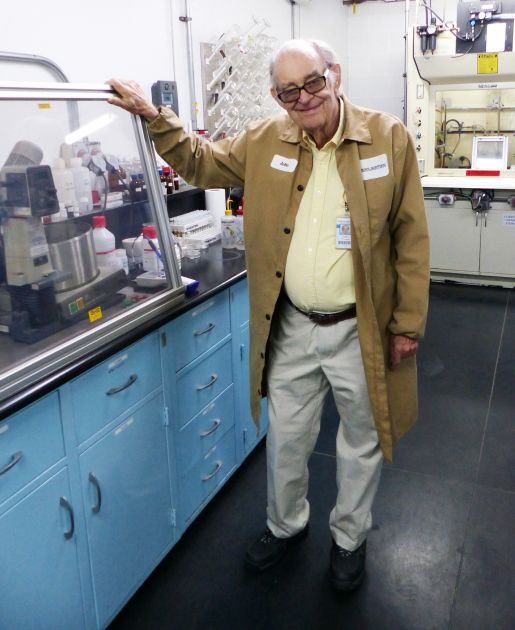
John Fronabarger the Willing Mentor
When I first came to Unidynamics (Goodyear, Arizona) from Ensign-Bickford (nearly the opposite side of the country in Simsbury, Connecticut), I was introduced to the technical staff, including John. Many of them were either a bit aloof or too busy to talk to newcomers, but John was different.
Early on, he reached down on the floor and handed me six inches of papers, many of them mimeographed notes (yes, mimeographed notes!), and said, “Read these, come back and we’ll talk.” This became a recurring event. One day he asked, “So, you want to go bite a bean?” which was code for “You want to go to lunch with us?” The place was a small Mexican restaurant, where we would sit at the bar, have a cold one and talk about everything under the sun.
Eventually, he became my mentor in energetic physics, playing a key role in my decision to pursue the rest of my career in the field. During my time under his mentorship he sent me to both Sandia and Los Alamos to meet and learn from the best. I consider this a debt that can never be repaid.
Decades later, I joined John for his 90th birthday at a hotel in Arizona. He truly has made a difference in so many peoples’ lives, and we have been fortunate enough to live part of it with him.
Warm regards,
Charles “Chip” M., NASA LSP Ordnance Engineering
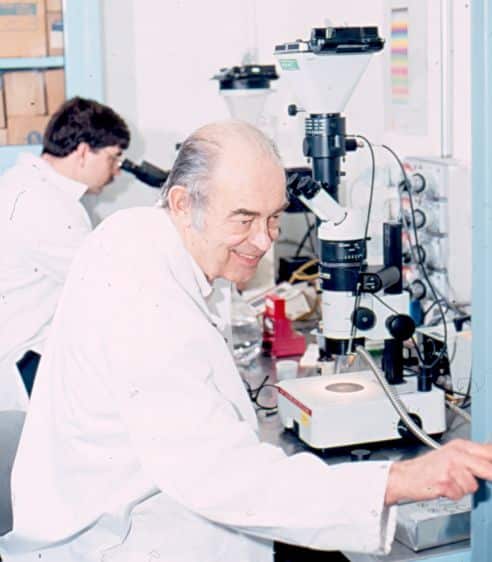
John Fronabarger the Inspiration
Even though I only officially worked alongside John at Unidynamics for eight months in 1991-1992, he has ended up being the most consequential mentor I have had in my career as a chemist. Since my time at Unidynamics, I’ve been fortunate to work with John on two SBIR projects at TPL Inc., and then on several projects at the Naval Air Warfare Center Weapons Division (China Lake) via Cooperative Research and Development Agreements (CRADAs) with PacSci EMC.
Through many technical interactions with him, as well as seeing his success in developing products that are incorporated into real-world systems, I’ve come to believe that John is probably the single most valuable energetic materials chemist our country has had in recent decades.
We’re all lucky that John has chosen to keep working, even at 94 years old. I’m privileged to have played a small part in exposing the more “basic” research-oriented energetic materials community to John by getting him to attend some of their regular meetings, such as the Gordon Research Conference on Energetic Materials. There, he’s been able to meet scientists who rarely attend the more “applications-oriented” conferences that John is used to, such as those of the ADPA.
Robert C., Ph.D. (NAWCWD China Lake 1995-2015)
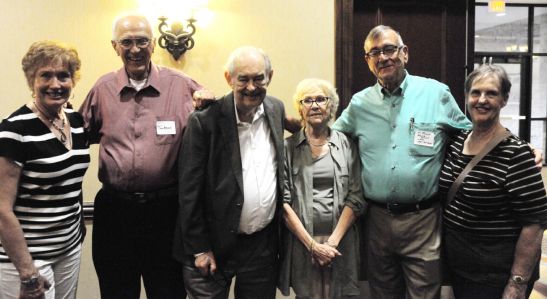
John Fronabarger the Entertainer
John once told me that when he was a young’un back at Crab Orchard, they used to have lots of hot plates on at various temperatures that people would sprinkle powders on to gauge an approximate autoignition level. He also said they were into stab primers at the time and had several drop testers for pull string/pin initiation. When an old-timer saw John ogling at the stab primer tester, he asked him if he wanted to try it. John got a bit excited and yanked the firing string so hard that he pulled the entire test machine off the hood and onto the floor!
Alex S., Senior Chemist (Unidynamics/Phoenix 1990-1994)